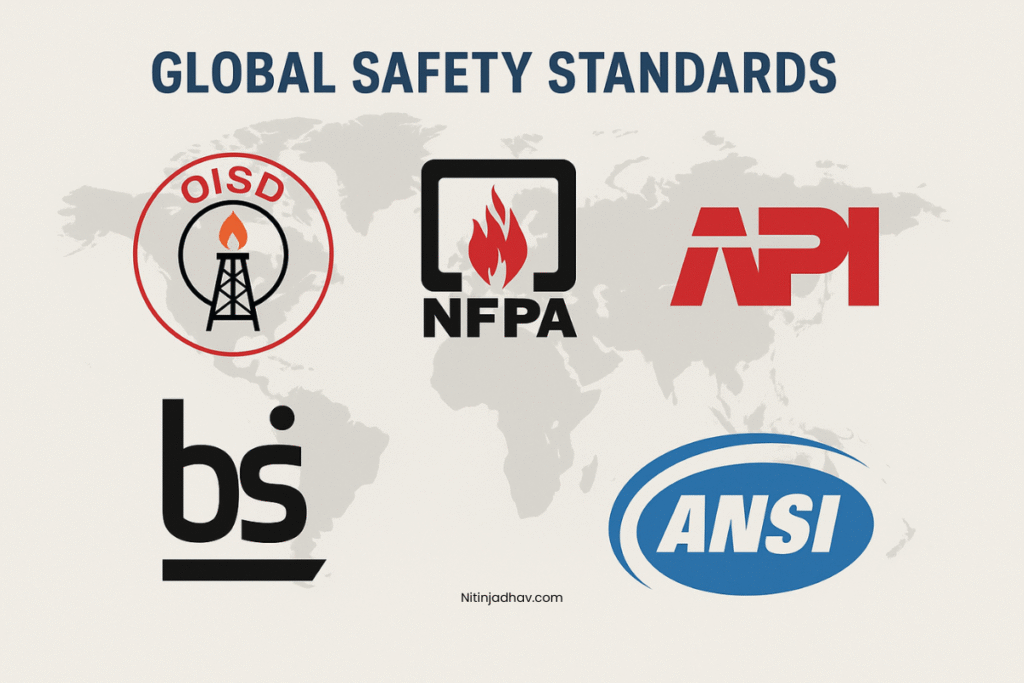🧠 Introduction
Process Safety Management (PSM) is a systematic framework designed to prevent catastrophic incidents involving hazardous chemicals and complex industrial processes. It aims to protect people, property, and the environment by proactively identifying, evaluating, and controlling risks.
A well-implemented PSM program helps mitigate the potential for fires, explosions, toxic releases, and major operational failures. It combines engineering and management practices derived from regulatory and industry standards such as:
- OSHA 29 CFR 1910.119 (USA)
- CCPS (Center for Chemical Process Safety) guidelines
- IEC 61511 for Safety Instrumented Systems
📎 Also Read: Introduction to Process Hazard Analysis (PHA)
⚖️ Why Golden Rules are Important?
The “Golden Rules” of PSM are not just abstract principles—they are actionable, frontline strategies that guide engineers, operators, and managers in making daily safety decisions. These rules are derived from decades of industry experience and safety incidents across the globe.
They help organizations:
- Embed safety into every layer of operations
- Build a strong safety culture
- Minimize risk from human error and process deviations
🔟 10 Golden Rules for Effective Process Safety Management
1. ✅ Recognize Hazards, Always
Thoroughly understand all potential hazards in the process. This includes flammable, toxic, reactive, and pressurized materials.
📎 Related: HAZOP Study – Complete Guide with Example
2. 🛠️ Design for Safety, Not Just Performance
Integrate safety considerations into every engineering decision. Apply Inherently Safer Design (ISD) principles to eliminate or reduce hazards at the source.
📎 See: Top 30 Software Tools for Process Safety Engineers in 2025
3. 📋 Use Structured Hazard Analysis Methods
Conduct formal risk assessments such as PHA, HAZOP, FMEA, and LOPA before new operations or any change.
📎 Dive deeper: LOPA Methodology Explained
4. 🔐 Control Changes with a Strong MOC System
Never bypass the Management of Change (MOC) process. Every change—from equipment to procedures—must go through hazard review.
5. 🧠 Train Continuously and Competently
Safety training is not a one-time event. Provide initial, refresher, and scenario-based training to ensure competence across all levels.
6. 📊 Use the Right Safety Integrity Level (SIL)
Assign appropriate SIL levels to Safety Instrumented Functions (SIFs) based on risk reduction requirements. Perform validation and verification as per IEC 61511.
📎 Explore: SIL Verification and Validation – Methodology with Case Study
7. ⚠️ Monitor Leading & Lagging Safety Indicators
Track and analyze both leading (near-misses, unsafe acts) and lagging indicators (incidents, downtime). Use data-driven KPIs to strengthen performance.
8. 🧾 Document Everything – Safety Relies on Records
Maintain up-to-date documentation for design, operation, maintenance, and training. If it’s not documented, it’s not reliable.
9. 🧯 Be Ready for Emergencies – Always
Regularly test emergency response plans, fire systems, alarms, and communication protocols. Preparedness saves lives.
10. 💬 Encourage a Speak-Up Culture
Empower everyone to report unsafe conditions without fear. Anonymous reporting tools and open-door policies are essential.
✅ Bonus Tip: Integrate Safety into Business Goals
Align process safety performance with KPIs and strategic goals. Safety is not a cost center—it’s a value driver for sustainable operations.
🧭 Conclusion
The 10 Golden Rules of PSM provide a solid foundation for building a safe, reliable, and compliant facility. From recognizing hazards to ensuring emergency readiness, these principles help shift organizations from reactive compliance to proactive risk management.
📎 Continue Learning:


